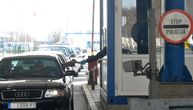Dr. Kisic Tepavcevic: We thought the virus would disappear in warm weather, but it's more resistant
"The virus is more resistant than previously thought, it will probably return"
If coronavirus returns in the fall, we will have a better start - some acquired collective immunity, but also much more knowledge about it, so the epidemic's course will be milder, Dr. Darija Kisic Tepavcevic, a Serbian epidemiologist and a member of the crisis HQ, has told the website 24 Sata.
"During the previous months, a certain number of people have come into contact with the virus, contracted the disease, recovered and gained immunity. This personal immunity protects the individual, but also builds collective immunity that is a bastion against the spread of the infection in the population. It's assumed that collective immunity of 60-70 percent is needed to prevent the spread of SARS-CoV-2. It's certain that all countries around the world are now significantly below that level of collective immunity, but everything indicates that we are getting used to the virus.
In the Republic of Serbia, in the overall structure of laboratory-confirmed cases of infection, there has been an increasing share of persons who show a mild clinical picture, or even no symptoms. Also, there are fewer and fewer infected people with the most severe form of the disease, and there is less and less demand for mechanical ventilation. Epidemiological research has shown that compared to the beginning of the epidemic, there has been a prolonged incubation period, which is also one of the indirect indicators of the decreased activity of the virus.
Research has not yet been done that directly shows there have been appropriate mutations in the genome of the virus which directly affected the reduction of its virulence, but all clinical and epidemiological indicators point to that," said Dr. Kisic Tepavcevic.
As she says, everyone hoped that warm weather would affect the disappearance of the virus, as has happened with its predecessor.
"However, SARS-CoV-2 has so far shown itself to be more resistant than previously thought in the external environment, and that an unfavorable combination of temperature, humidity and the UV index is needed. However, warm weather significantly reduces the possibility of transmission of droplet infections because the virus falls to the ground faster, and we spend less time indoors where it is easier for it to spread. But the most important thing is the following - the virus can survive, and multiply, only in our bodies. We are, therefore, the ones who must stand in its way, and not allow it to find a new sensitive person who will provide it with conditions for survival and further spreading."
If it survives high temperatures and UV rays, it is certain that the virus will reappear, probably in the fall.
"However, in that case, we start with some acquired collective immunity, and the epidemic's course would, as a rule, be milder. We have all together learned a lot about this virus. Now we know how to stand in its way. At first, most people looked with suspicion at the recommendations to maintain physical distance, wear masks and wash their hands. They wondered if it was possible that in the 21st century we could not offer anything 'smarter'. However, experience has shown that these preventive measures save lives," she said.
Asked if we can catch the virus just by passing by an infected person, or only if we stay near them for at least ten minutes, she said that the WHO gave the answer to that.
"That is also the definition of close risk contact given by the World Health Organization - contact without a mask with a potential reservoir of infection at a distance of less than two meters, and for more than 15 minutes. We see that it's not so simple, but if we live or work with a person who has the virus inside them, transmission is very possible if we do not respect prevention measures."
(Telegraf.rs)

